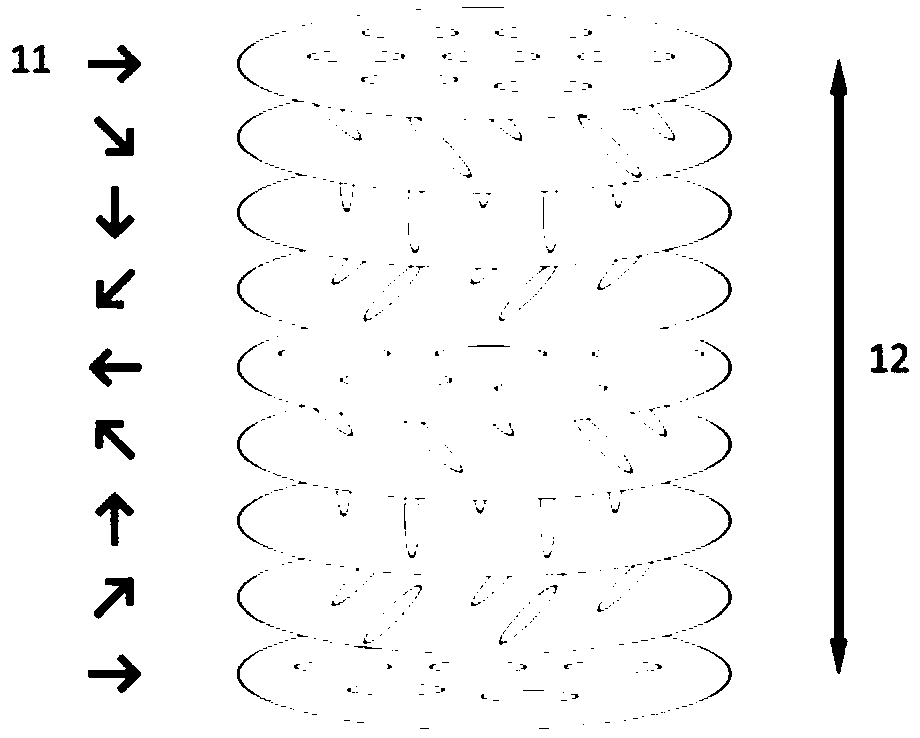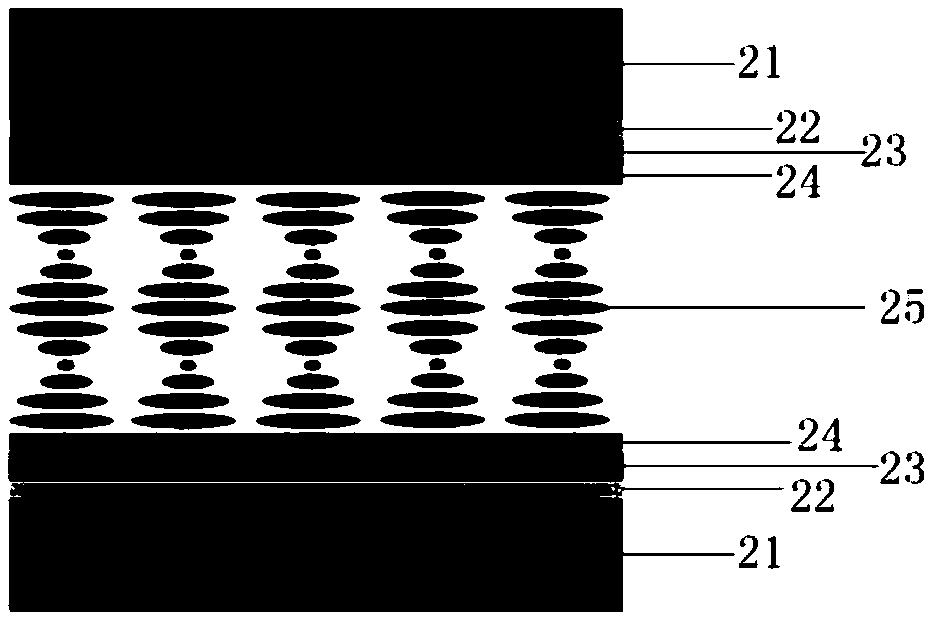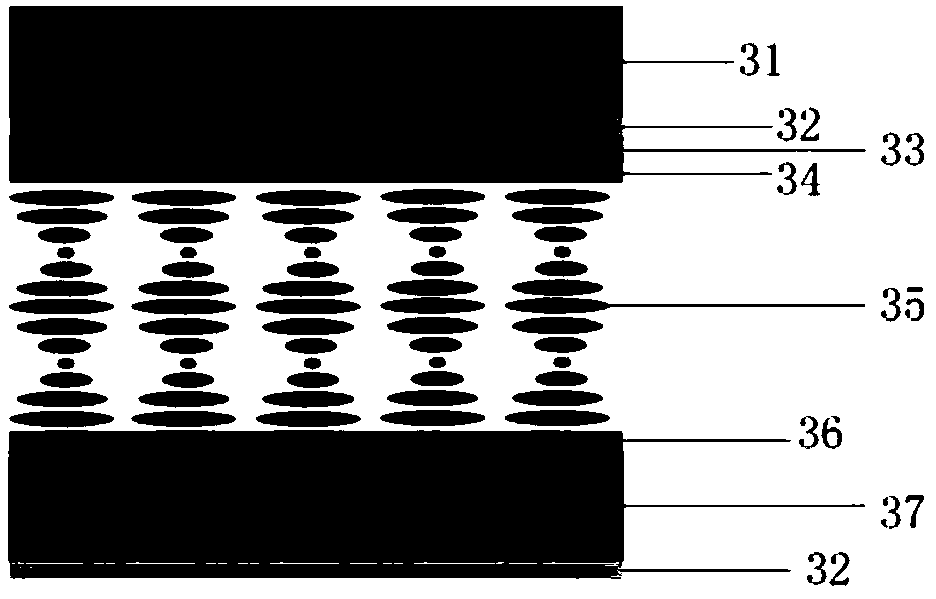Light-dependent control switching method for cholesteric phase liquid crystal fingerprint texture
A cholesteric liquid crystal and fingerprint technology, applied in the liquid crystal field, can solve the problems of high electric field modulation requirements, difficult operation, slow pattern response speed, etc., and achieve the effect of high resolution, easy erasing and high resolution
- Summary
- Abstract
- Description
- Claims
- Application Information
AI Technical Summary
Problems solved by technology
Method used
Image
Examples
Embodiment 1
[0038] figure 2 It is a parallel alignment cholesteric liquid crystal cell with dual substrates and photoconductive layers in the first embodiment. The liquid crystal cell includes two substrates, an accommodating space for the liquid crystal layer 25 is formed between the two substrates, and the substrates include a matrix layer 21 , a conductive layer 22 , a photoconductive layer 23 and an alignment layer 24 . The alignment layer 24, the photoconductive layer 23, the conductive layer 22 and the matrix layer 21 are sequentially laminated on the outside of the liquid crystal layer 25 from inside to outside, wherein: the matrix layer 21 is made of transparent glass, but other colorless or Colored supporting materials, such as plastic film or plastic plate, etc.; the conductive layer 22 is made of ITO (indium tin oxide), the photoconductive layer 23 is made of ZnO (zinc oxide), and the alignment layer 24 is made of PI (polyimide).
[0039] The liquid crystal layer 25 is locate...
Embodiment 2
[0058] The mixed alignment cholesteric liquid crystal cell of the double substrate containing the photoconductive layer of the second embodiment is as follows image 3 shown. It differs from Example 1 in that:
[0059] The upper substrate of the liquid crystal cell comprises: a matrix layer 31, a conductive layer 32, a photoconductive layer 33 and an alignment layer 34, wherein: the matrix layer 31 is made of transparent glass, the conductive layer 32 is made of ITO, the photoconductive layer 33 is made of ZnO, and the alignment layer 34 is made of PI; the lower substrate includes: a conductive layer 32, a photoconductive layer 37 and an alignment layer 36, wherein: the conductive layer 32 is made of ITO, the photoconductive layer 37 is made of BSO (bismuth silicate) crystal, and the alignment layer 36 is made of DMOAP. The liquid crystal layer 35 is selected from cholesteric liquid crystal. Since the supporting effect of the BSO crystal is relatively obvious, the base layer...
Embodiment 3
[0064] The parallel alignment cholesteric liquid crystal cell of the single substrate of the third embodiment containing a photoconductive layer is as follows: Figure 4 shown. It differs from Embodiment 1 and Embodiment 2 in that:
[0065] The upper substrate of the liquid crystal cell includes: a matrix layer 41 , a conductive layer 42 and an alignment layer 44 , wherein: the matrix layer 41 is made of transparent glass, the conductive layer 42 is made of ITO, and the alignment layer 44 is made of PI. The lower substrate includes: a conductive layer 42 , a photoconductive layer 43 and an alignment layer 44 , wherein: the conductive layer 42 is made of ITO, the photoconductive layer 43 is made of BSO crystal, and the alignment layer 44 is made of PI. The liquid crystal 45 is a cholesteric liquid crystal.
[0066] Because the photoconductive effect of the BSO crystal is relatively obvious, on the basis of Example 2, the photoconductive layer on the other side can be removed....
PUM
 Login to View More
Login to View More Abstract
Description
Claims
Application Information
 Login to View More
Login to View More - R&D
- Intellectual Property
- Life Sciences
- Materials
- Tech Scout
- Unparalleled Data Quality
- Higher Quality Content
- 60% Fewer Hallucinations
Browse by: Latest US Patents, China's latest patents, Technical Efficacy Thesaurus, Application Domain, Technology Topic, Popular Technical Reports.
© 2025 PatSnap. All rights reserved.Legal|Privacy policy|Modern Slavery Act Transparency Statement|Sitemap|About US| Contact US: help@patsnap.com



